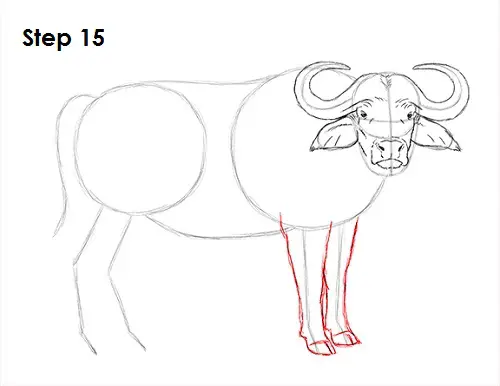
Step 15: Use the two lines on the right side as guides to draw the African cape buffalo's front legs. Lightly sketch the shape of the leg on the left as you follow the path of the line. When you get the structure right, darken the lines. Draw the hoof at the bottom. Draw the front leg on the other side the same way. Bend the feet forward a bit to indicate the joints.
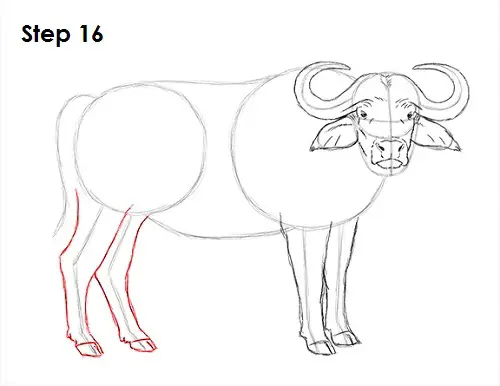
Step 16: Use the two lines on the left side as guides to draw the African cape buffalo's hind legs. Follow the basic path of the guide line as you lightly sketch the shape of the first leg. Darken the lines only when you have the structure of the leg right. The legs should bend twice at the joints. Add the hoof at the bottom using a couple of small lines. Draw the hind leg on the other side the same way. The legs should be thicker at the top and gradually get skinny toward the bottom.
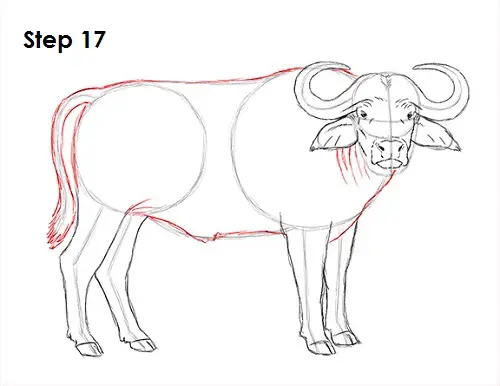
Step 17: Use the remaining shapes and lines as guides to draw the rest of the African cape buffalo's body and tail. Follow the path of the guides as you darken the lines. Add some lines near the neck to represent the folds of skin. Use the line on the left as a guide to draw the tail. Make the tip bushy using quick, short strokes.
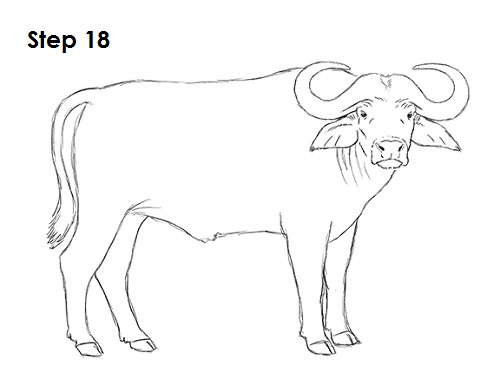
Step 18 (optional): Erase as much as you can of the initial guide lines for a cleaner look. Don't worry about erasing all of the guides. It's okay to leave some behind. Re-draw any final sketch lines that you may have accidentally erased.
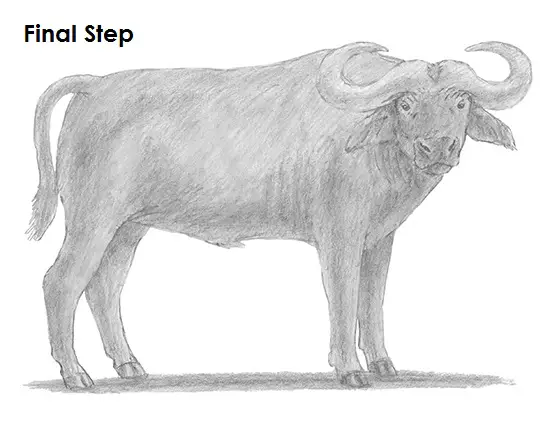
Final Step (optional): Add some shading to your African cape buffalo drawing to give it more dimension and volume. Pick the direction of the light source when shading so that the shadows are consistent with it. Don't worry too much about the shading if you're also going to add more value to your drawing.
You can add more value throughout your African cape buffalo drawing for extra detail. Cape buffaloes are mainly grayish black, so add a solid dark value all over the body. You can also alternate between light and dark value throughout the body to indicate the muscle structure. Vary the pressure on your pencil to get different degrees of tonal value. Try to add the value evenly across the body for a smooth coat and avoid a rough, gritty texture. Add the value lightly at first, then gradually build up to the level of darkness that you want. It's always a good idea to use reference for a more accurate drawing. Adding the value to the body can be quite time-consuming, so be patient and take breaks. Remember to pause the "How to Draw an African Cape Buffalo" after each step to draw at your own pace.
And finally, add a cast shadow underneath. This helps ground the buffalo so it doesn't appear to be floating.
Thanks for visiting! Subscribe to the How2DrawAnimals YouTube Channel for a new tutorial every Saturday.
To learn how to draw popular cartoon characters, visit EasyDrawingTutorials.com.
RELATED TUTORIALS
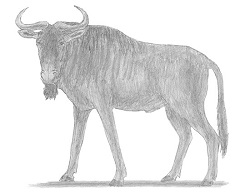 |
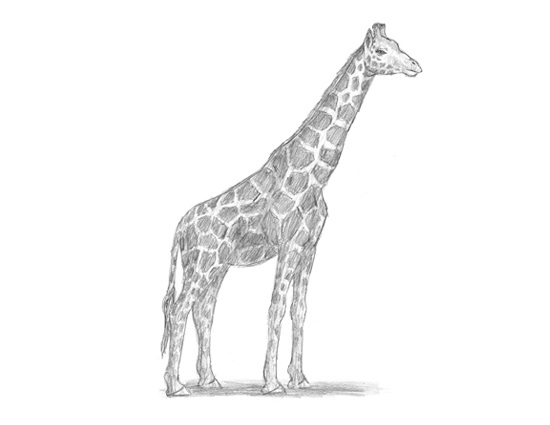 |
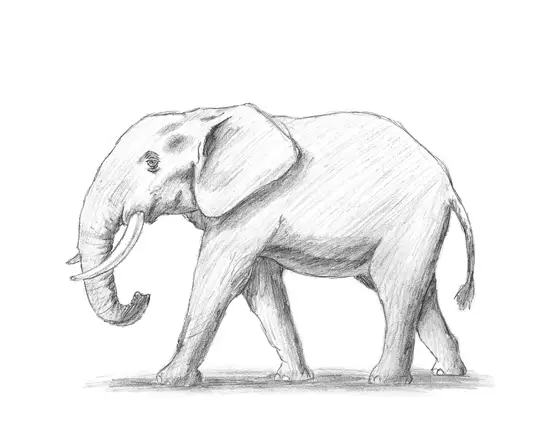 |







